You can contact LEARNZ, part of CORE Education, at:
Postal Address:
PO Box 13 678,
Christchurch 8141,
New Zealand
<- Homepage: Bioblitz: What's in your backyard?
Kia ora koutou,
Yesterday you looked at a variety of methods for observing and catching different animals. Today you were looking forward to seeing what animals you had managed to catch. Before you could check you had to complete the second field trip web conference. West Park School provided interesting questions which our DOC experts enjoyed answering. You can watch the recording of this web conference to find out more.
Where are all the land animals?
You then headed back up the valley into Ō Tū Wharekai. You met with Damien at the Ashburton River and were eager to see if any animals had ventured through the tracking tunnels which you set up yesterday. You checked all five tracking tunnels and found no animal tracks. Damien thought this was because it was a clear, chilly night which means lizards are less active. This area also has lots of traps to catch predators. Introduced predators such as wild cats, stoats, rats and hedgehogs are common in this area. Thankfully the traps have reduced their numbers. Damien also explained that to get a clear idea of land animals in an area you would need to leave tracking tunnels and cameras out for more than one night. We also saw nothing on the trail camera. Hopefully, we will have more luck with finding invertebrates!
Monitoring birds
Before checking your pitfall trap you caught up with Ian and Nancy. Ian took you out to Lake Emily in search of more birds. You saw some of the same introduced birds that you spotted yesterday as well as Canadian geese. Ian has counted 19 species over the last two days and about half of these have been native birds. DOC monitors bird numbers to understand changes over time and to see if introduced animals are out competing native animals. Ian talked about some of the methods that can save you time when monitoring birds. You can complete five-minute bird counts at different times of the year and compare your results. You can also record bird calls to help identify different species. Web sites such as New Zealand Birds Online and iNaturalist can help you to identify birds. Watch the video to find out more.
Peculiar plants
Nancy wanted to show you some of the strange plants that grow in Ō Tū Wharekai so you headed around the side of Lake Heron. Here you saw some tiny plants clinging to the side of a hill. Many plants in this area grow low to the ground, have small leaves and are compact. This helps these plants to survive the intense winds, winter snow and hot summers. Some plants are also spikey to stop animals from eating them. Some of these native plants aren’t easy to spot, you had to get down on the ground and look past the weeds to find them.
Neither a plant nor an animal
Nancy also pointed out some lichen and fungi. Lichen and fungi are not plants, they are their own type of organism. Lichens are bizarre organisms and no two are alike. Lichen are a complex life form that is a partnership between a fungus and an alga. It was interesting to see the assorted colours of lichen and how they can grow across rocks. Fungi are another type of organism and they play an important role in all ecosystems. They help recycle nutrients and provide food. You can find out more by watching the video.
Intriguing invertebrates
You finished the day back at the Ashburton River where you caught up with Brad. Brad had been busy cataloguing all the invertebrates he found yesterday. He showed you some of the critters he had caught in the sweep net. A native parasitic wasp had an interesting life story. These wasps lay their eggs inside caterpillars, eventually the eggs hatch and the larvae eat the caterpillar. You also saw a black cricket, a spider, a moth and an alpine grasshopper. It was incredible to find so many invertebrates and it made me realise how important all these critters must be to this ecosystem. You then checked if you had caught anything in your pitfall trap. At first you may not have noticed the dark brown wētā hidden under some moss. This was a male mountain stone wētā and these curious creatures can survive being frozen. They also have massive jaws or mandibles which they use to defend themselves. Luckily this wētā was happy enough crawling over Brad’s hands and didn’t try to bite him. Brad also showed you some of the aquatic invertebrates he caught in his kick net yesterday. You could identify a stonefly, mayfly and caddis fly and finding these invertebrates is a sign of a healthy stream. Stream’s with poor water quality tend to have more worms and snails.
It has been a successful day searching for different organisms and it’s clear that Ō Tū Wharekai supports a high level of biodiversity. You can check out some of the species we have found on the iNaturalist field trip BioBlitz page.
See you tomorrow,
Shelley the LEARNZ field trip teacher.

Damien, Brad, Shelley, Nancy and Ian enjoy answering West Park School students' questions during today's web conference. Image: Andrew Penny, LEARNZ.
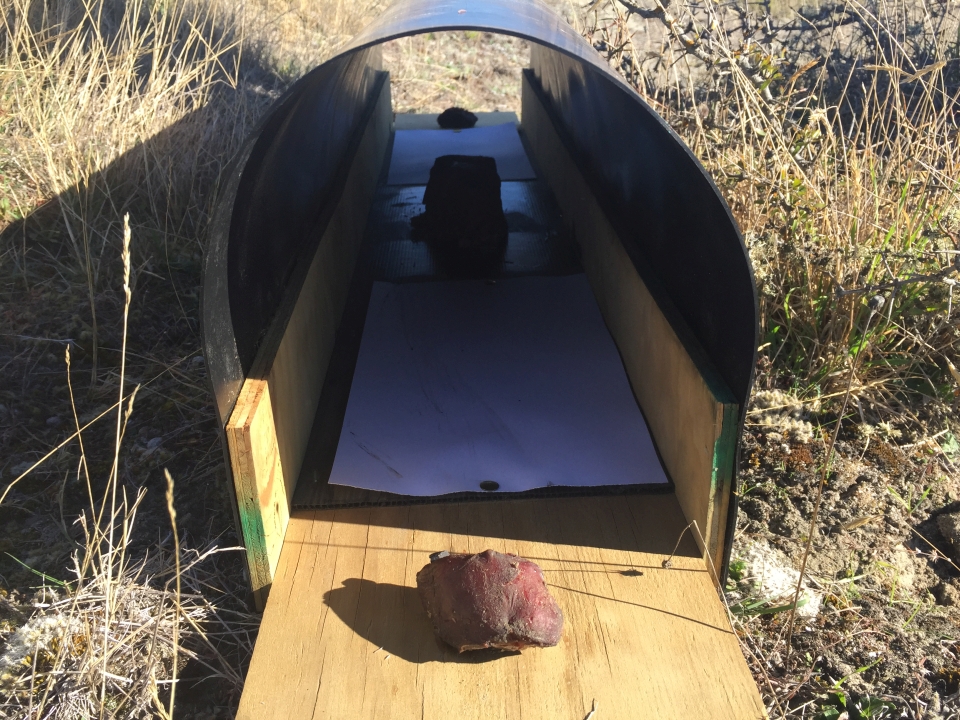
This large tracking tunnel was set up to try and attract animals such as wild cats. Why are wild cats a problem in this area? Image: Shelley Hersey, LEARNZ.
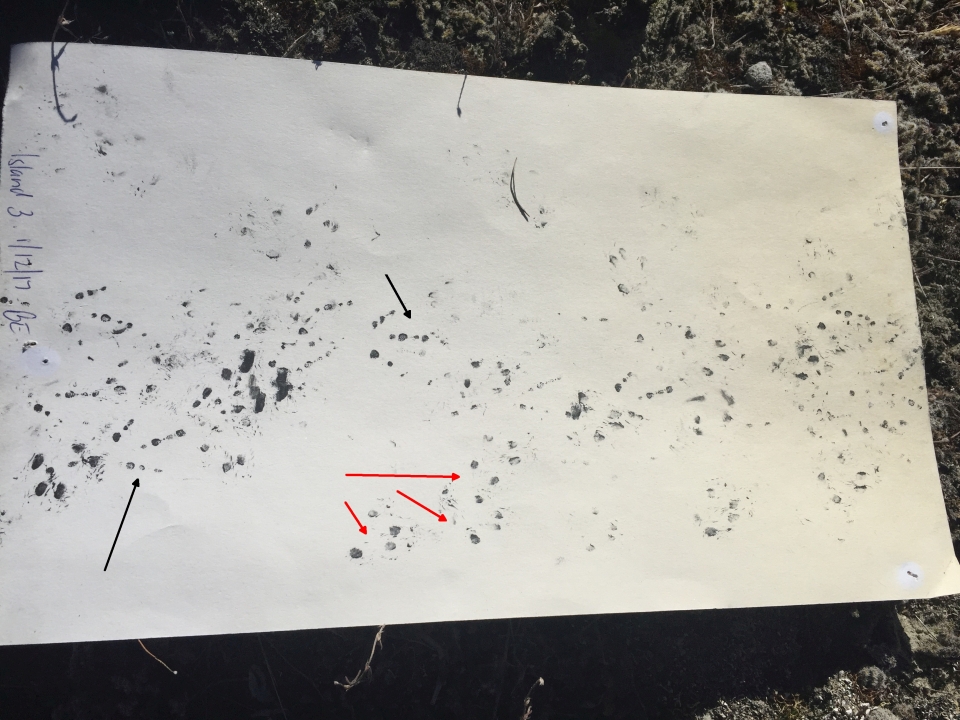
Tracking tunnels record animal footprints. The red arrows point to stoat paw prints while the black arrows point to wrybill footprints. Image: Shelley Hersey, LEARNZ.
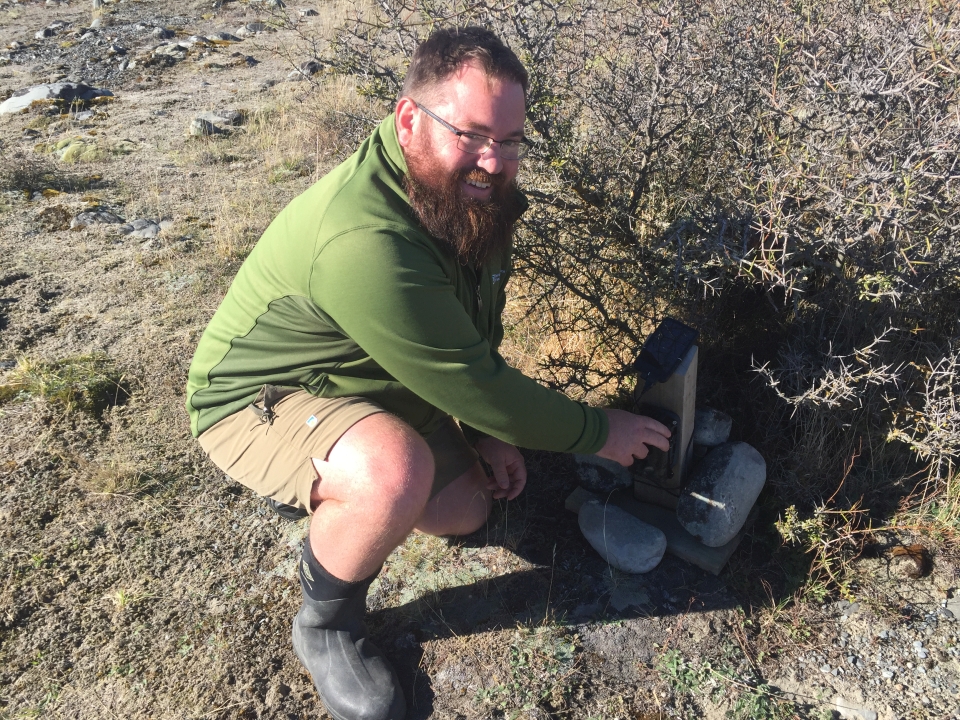
Damien checks one of the trail cameras. What animals might you expect to see on this camera? Image: Shelley Hersey, LEARNZ.
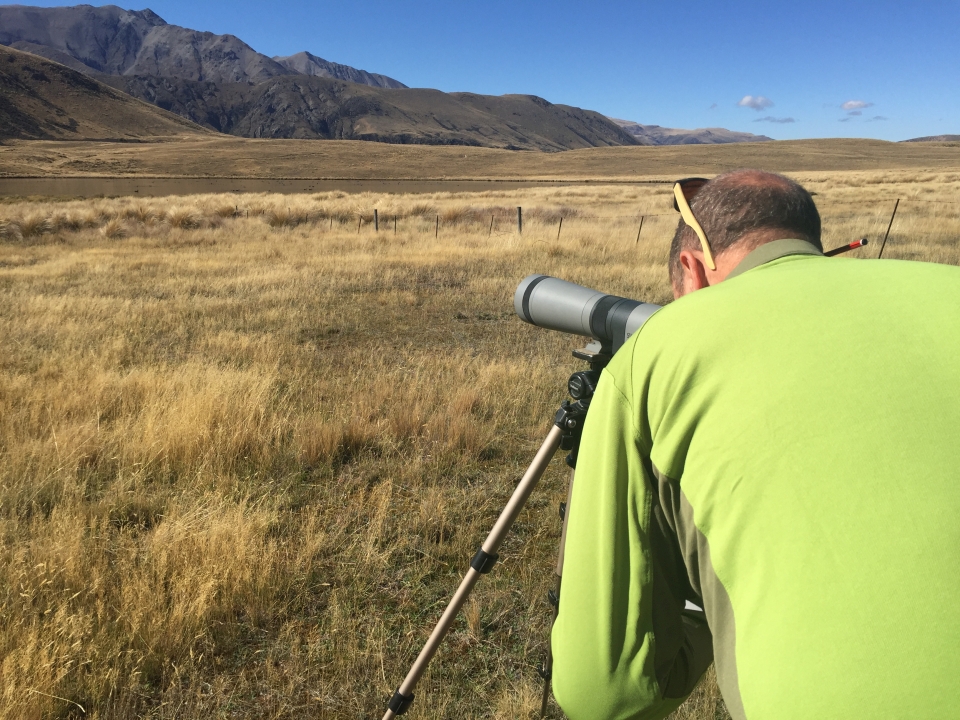
Ian looks for birds at Lake Emily. What birds do you think he will see in this habitat? Image: Shelley Hersey, LEARNZ
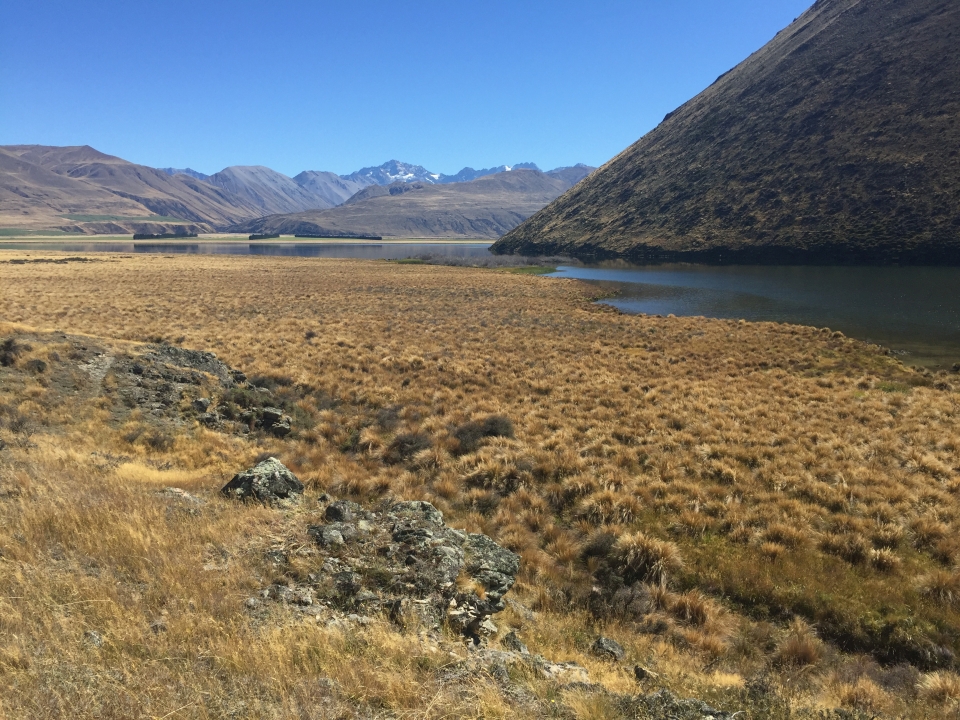
Looking out over a wetland area alongside Lake Heron in Ō Tū Wharekai. Image: Shelley Hersey, LEARNZ.
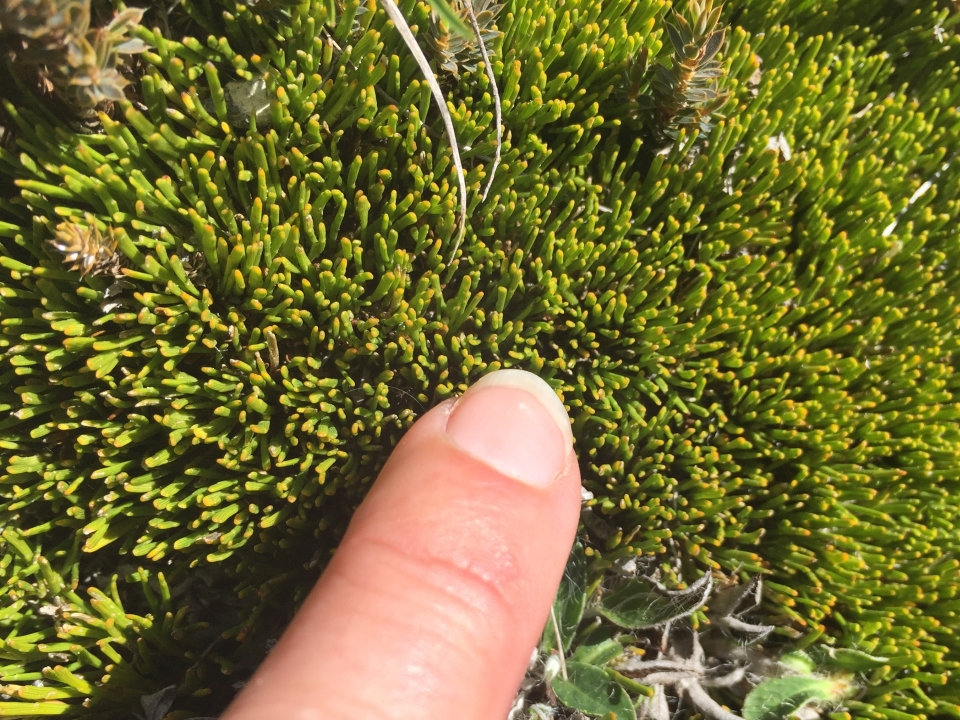
This is a native broom species growing in Ō Tū Wharekai. What adaptations does this plant have? Image: Shelley Hersey, LEARNZ.
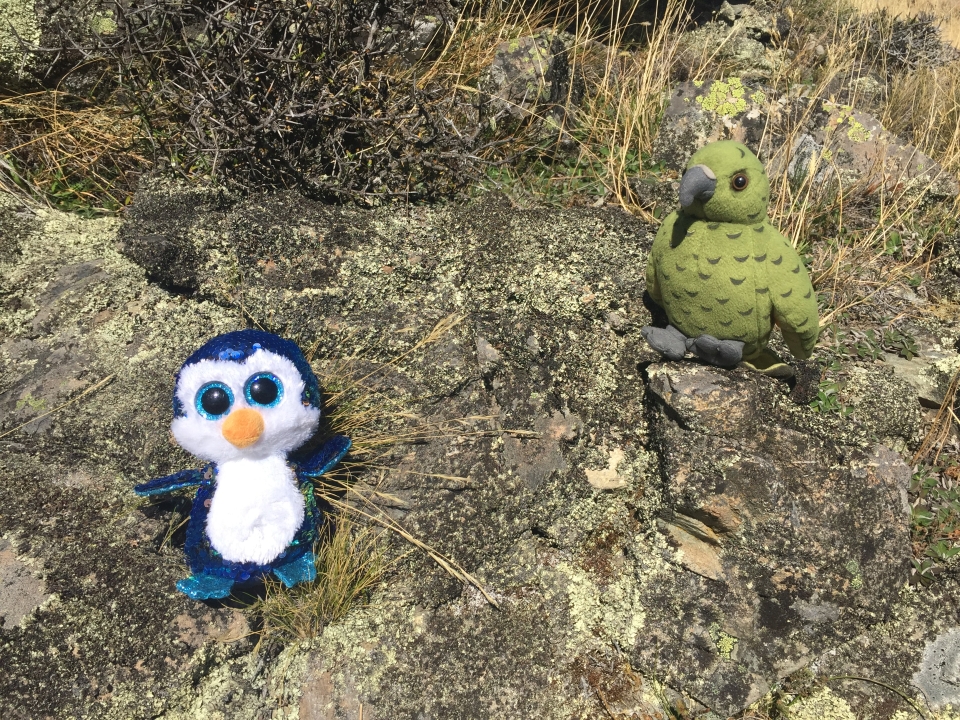
The ambassadors find some lichen growing on rocks in Ō Tū Wharekai. What is special about lichens? Image: Shelley Hersey, LEARNZ.

This is a mountain stone wētā. What adaptations do these invertebrates have to help them survive harsh winters in Ō Tū Wharekai? Image: Shelley Hersey, LEARNZ.

This is a stonefly nymph which was caught using a kick net. A stone fly has a two part tail, while a mayfly has three. Image: Shelley Hersey.